I have a 10k stereo slide potentiometer with the carbon tracks pretty much intact but one of the short 'traces' that connect the ends of tracks to the solder pins seems to have somehow deteriorated and lost its conductivity. (Area between pin terminal A1 and carbon track in photo)
The pot is used as the master volume fader of a Tascam 244 4-track recorder. I know that the cheapest and easiest way would probably be just to search for a good enough match and replace the whole thing, but I have a lot of stuff with all sorts of pots waiting to get repaired so finding a decent workaround might save me a lot of searching and waiting for orders to ship.
I've only found one matching case on this VIDEO , but that still encourages me to think there are smarter people than me who've had similar issues and have come up with a working solution.
I haven't tried adding graphite from pencil like in the video since I think the added resistance would be too much for the 10k pot and cause the left and right channels to get out of balance. I did try applying solder on the trace but it wouldn't stick no matter how much flux I used.
I've looked a bit into conductive paints and glues and found that some glues used for fixing car window heaters might do the trick. Unfortunately at least Bison (Bison Electro) and Loctite (Loctite 3863 Circuit+) seem to have discontinued manufacturing these products, although you can still find the latter on ebay etc. The ones I've found can be ordered for 20€ (~ 24USD) shipping included but contain only 2 grams of glue.
Anyone here have experience in fixing similar problems using glues/paints? Is that 2 grams enough for several pot jobs? How about the shelf life? Maybe some totally different approach with good results? I've been thinking about fixing a piece of foil on top of the trace but haven't really figured out how to do that without the conductive glue.
I'd also be intrigued to know what might have caused this. All I can think of is some corrosive liquid getting into the fader.
EDIT:
I tried fixing a slice of tin foil with scotch tape, worked just as well as one could imagine: 10k -> real noisy 1M - 5M
I also tried the same thing with solder wick soldered to the pin but could not make the connection to the carbon trace.
..Kinda losing my faith here but I guess I'll give one of those silver glues a try. Will update when I have tried it.
